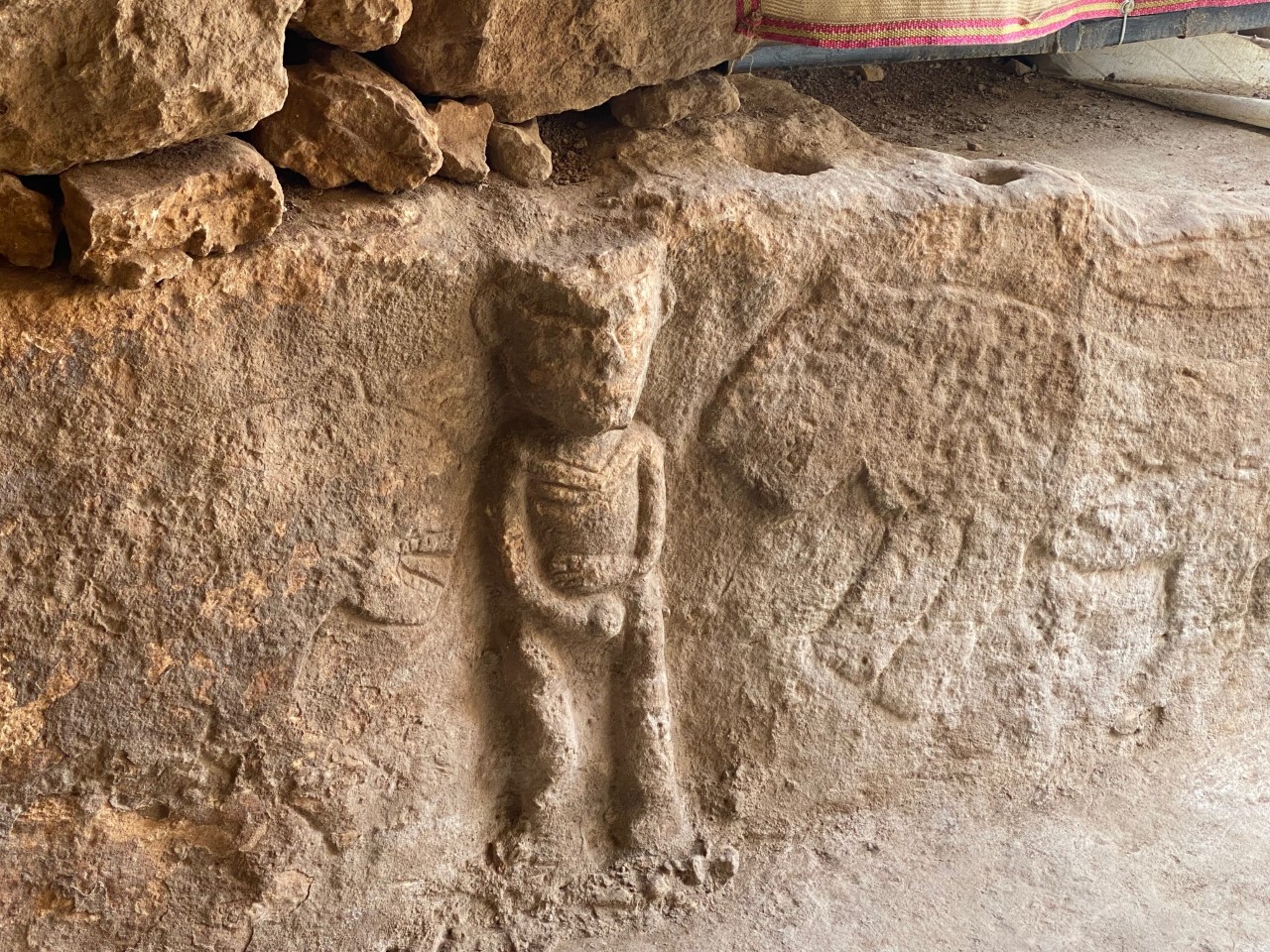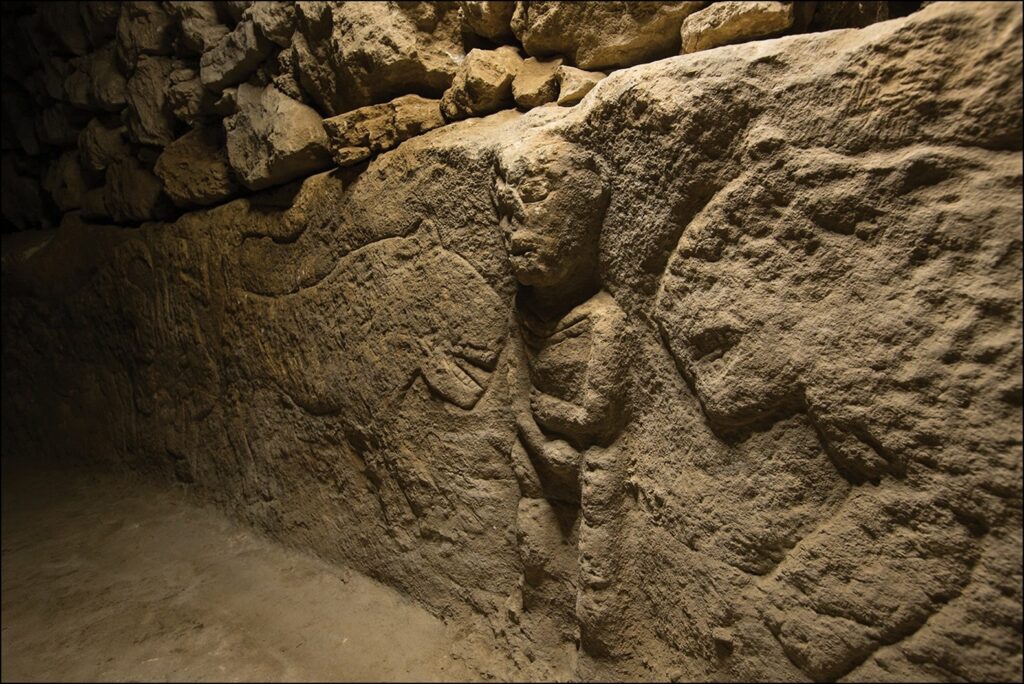In the southeastern region of Türkiye, near the renowned archaeological site of Göbeklitepe, a remarkable discovery has shed new light on the dawn of human civilization. Researchers have recently unveiled an 11,000-year-old wall relief that constitutes the earliest known depiction of a narrative “scene,” offering a glimpse into the intricate relationship between humans, the natural world, and the animal life that surrounded them during the transition to a sedentary lifestyle.
This ancient masterpiece, found in the ancient city of Sayburç in Şanlıurfa, is a captivating work of art that has captured the attention of the archaeological community and the public alike. Its significance lies not only in its age but also in the insights it provides into the cultural and social dynamics of the Neolithic period, a time when hunter-gatherers began to transition to a more sedentary agricultural lifestyle.
The Sayburç Relief: A Window into the Past
![The World's Oldest Temple (2016) - Göbekli Tepe ruin discovered in Turkey that dates back to 11000 BCE [1:20:10] : r/Documentaries](https://artarch.dalatcamping.net/wp-content/uploads/2024/07/5_maxresdefault.jpg)
The Sayburç relief, spanning an impressive area of approximately 3.7 meters (12.1 feet), depicts a narrative scene featuring two distinct scenes. The first scene tells the story of a man and a bull, while the second shows a man surrounded by two leopards. Interestingly, both figures in the work are male, suggesting the potential significance of gender roles or power dynamics within the society that created this remarkable piece of art.
Radiocarbon dating studies of samples from the region suggest that these reliefs were likely created around 9,000 B.C., a time when hunter-gatherers transitioned to a more sedentary agricultural lifestyle. The ancient city of Sayburç, where the relief was found, was founded during this pivotal period in human history, making it a crucial site for understanding the cultural and social changes that occurred during this time.
Eylem Özdoğan, the author of the study published in the scientific journal Antiquity, emphasizes the significance of this discovery, stating that there is very little information about the civilization that created this remarkable work of art. “The communities living in this region share a common cultural environment. They certainly communicate with each other and share innovations, social ideology and a common culture,” Özdoğan, an archaeologist at Istanbul University, explained to Gizmodo.
Unlocking the Secrets of Sayburç

Excavations that began last year in Sayburç have unearthed a Neolithic structure in the city, shedding light on the rich cultural and archaeological heritage of the region. As the significance of Sayburç’s historic texture is being recognized, efforts are underway to preserve and uncover more of its secrets.
One of the most intriguing aspects of the Sayburç relief is the way it depicts the relationship between humans and the natural world. Özdoğan notes that the relief emphasizes the dangerous features of the figures, with the prominent display of the leopards’ teeth and the bull’s horns. This suggests that the artists who created this work were acutely aware of the challenges and threats posed by the natural environment, and were perhaps attempting to capture the delicate balance between humans and the wild creatures that shared their world.
The Significance of the Sayburç Relief

The Sayburç relief is considered one of the oldest narrative works in archaeology, predating even the 44,000-year-old pig painting discovered in Indonesia in 2021, which is the oldest known work of figurative art. However, the Indonesian painting did not depict a narrative scene, making the Sayburç relief an even more remarkable discovery.
The unearthing of this 11,000-year-old wall relief near Göbeklitepe has captivated the archaeological community and the public alike. This ancient masterpiece not only represents the earliest known depiction of a narrative scene but also provides invaluable insights into the intricate relationship between early human societies and the natural world they navigated.
As researchers continue to unravel the secrets of Sayburç and the civilization that crafted this remarkable work of art, we are granted a rare opportunity to witness the dawn of human civilization and the enduring human desire to capture the complexities of our existence through artistic expression. The Sayburç relief stands as a testament to the ingenuity, creativity, and cultural richness of our ancestors, and serves as a reminder of the profound impact that the natural world has had on the development of human societies throughout history.
Conclusion
The discovery of the Sayburç relief has opened a new chapter in our understanding of the Neolithic period and the early stages of human civilization. This ancient masterpiece, with its captivating narrative scenes and intricate depictions of humans and the natural world, offers a glimpse into the cultural and social dynamics of a time when the foundations of modern society were being laid.
As we continue to explore and uncover the secrets of Sayburç and the civilization that created this remarkable work of art, we are granted a rare opportunity to witness the dawn of human civilization and the enduring human desire to capture the complexities of our existence through artistic expression. The Sayburç relief stands as a testament to the ingenuity, creativity, and cultural richness of our ancestors, and serves as a reminder of the profound impact that the natural world has had on the development of human societies throughout history.
